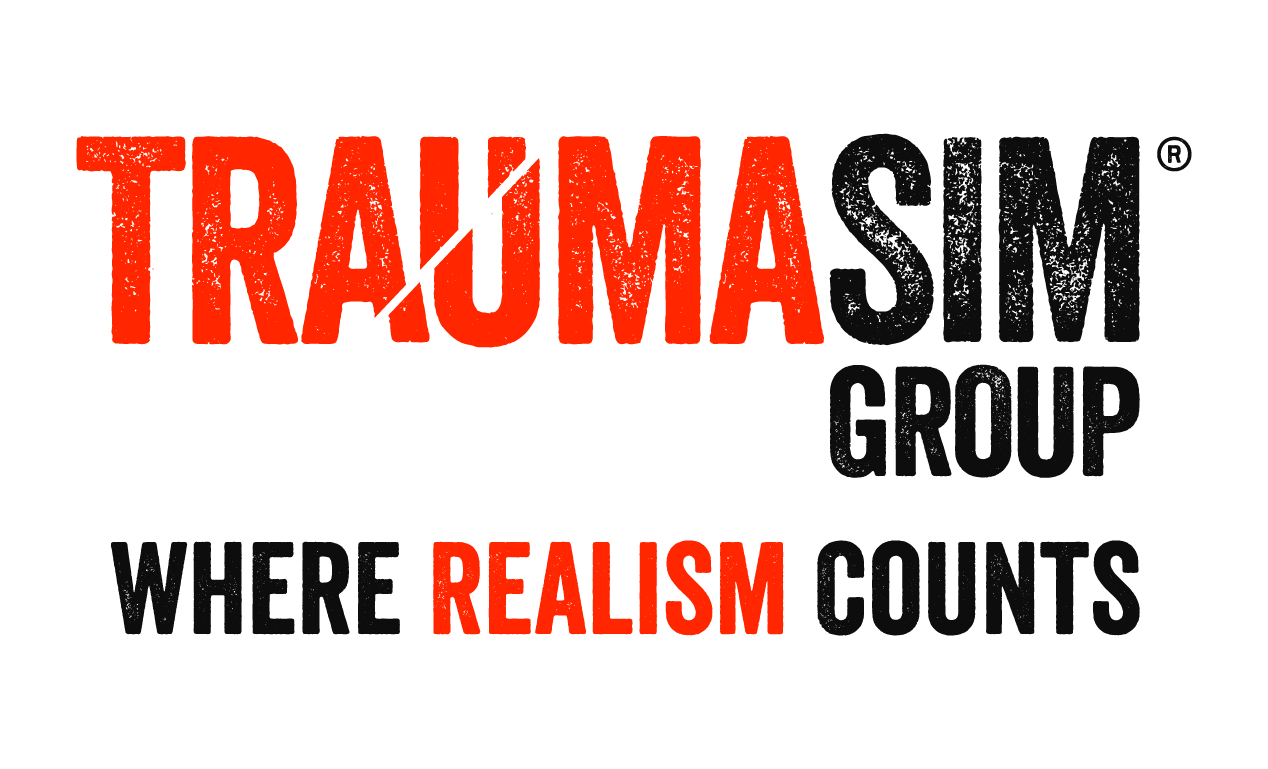23rd May 2022
Mine Emergency Rescue Competitions - why they are important & what we can learn from them! #Safework Month
As several mining teams are preparing for upcoming Mine Rescue Competitions in WA, we reflect on the history and importance of such exciting but serious events.
Many mining operations have emergency response teams to respond to incidents that pose a threat to lives and assets. Due the remoteness of some operators, these highly skilled emergency response teams may also be asked to assist in nearby emergency situations at other mine sites or within their local community.
The original competition that started it all was in the Goldfields in 1903, with regular competitions taking place from 1911. The competitions play an integral part in mine site emergency training, offering competing teams the opportunity to test and hone their emergency response skills through simulated emergency situations, while sharing their experience and knowledge with fellow participants.
This year’s MERC will attract over 15 emergency response teams, 150 industry volunteers and over 4000 members of the public!
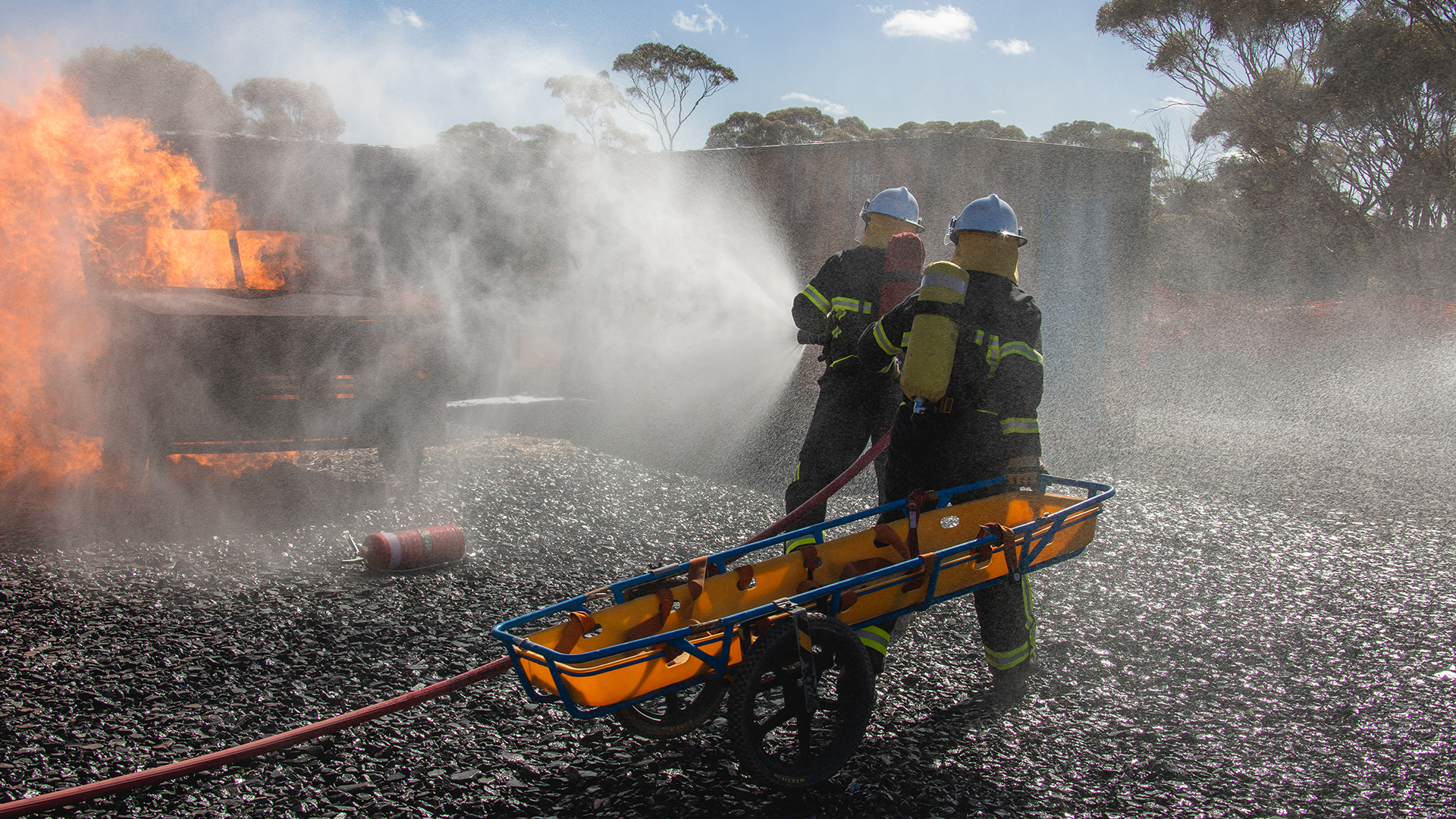
Image: MERC Kalgoorlie, May 2021, Fire Rescue Scenario with competing team in action. Source: Remote Digital Imagery
Hyper-realistic scenarios are setup to test participants skills and competence in firefighting, hazchem response, first aid, team skills, vehicle extrication, rope rescue, incident management, confined space rescue and a theory exam.
Utilising a variety of simulation solutions including role players, medically accurate wounds and injuries (moulage), fire, smoke, sounds and smells, an unforgettable learning experience is created that immerses trainees into a real-world situation and tests their response under the high-stress environment of a true incident or emergency.
These types of competitions are also an invaluable opportunity to not only demonstrate competency, but identify potential gaps in training, knowledge, business procedures and system processes. The hands-on experience is supported with feedback from a team of adjudicators, who assess the every move of competitors.
They provide the teams with real-time feedback plus a written report after the competition, allowing participants to see what they do well and how they can improve.

Image: MERC Kalgoorlie, May 2021, First Aid Scenario with volunteer role player, moulage and competing team in action with adjudicator. Source: Remote Digital Imagery
Just three short years ago, Victoria Putter had no experience as part of an emergency response team – now she’s captain of the St Ives team that proudly competed at the Goldfields Surface Mine Rescue Competition earlier this year.
Putter says the physical training involved is “blood, sweat and tears” for two weeks leading into every competition. “Without these comps, you don’t get that full-blown practice in a realistic scenario,” Putter said.
“My favourite thing is the actual scenarios themselves and the rush of the adrenaline when you walk in and someone is screaming and needing help.
“I just can’t get over that feeling, especially with the scenarios on the first day of competition. They are insane and feel really realistic.”
While these events promote healthy competition, and bragging rights are always up for grabs, it’s about sharing of knowledge in areas of expertise and embracing the opportunity to learn new skills from other mine rescue or industry experts.
The competition doesn’t just prepare miners and mine sites, but it extends to other workers from other industries – such as the volunteer ambulance workers and other emergency agencies that are engaged for the event. A huge range of emergency services and passionate volunteers are needed to make these events happen, and it creates a positive environment of learning, sharing and continuous improvement.
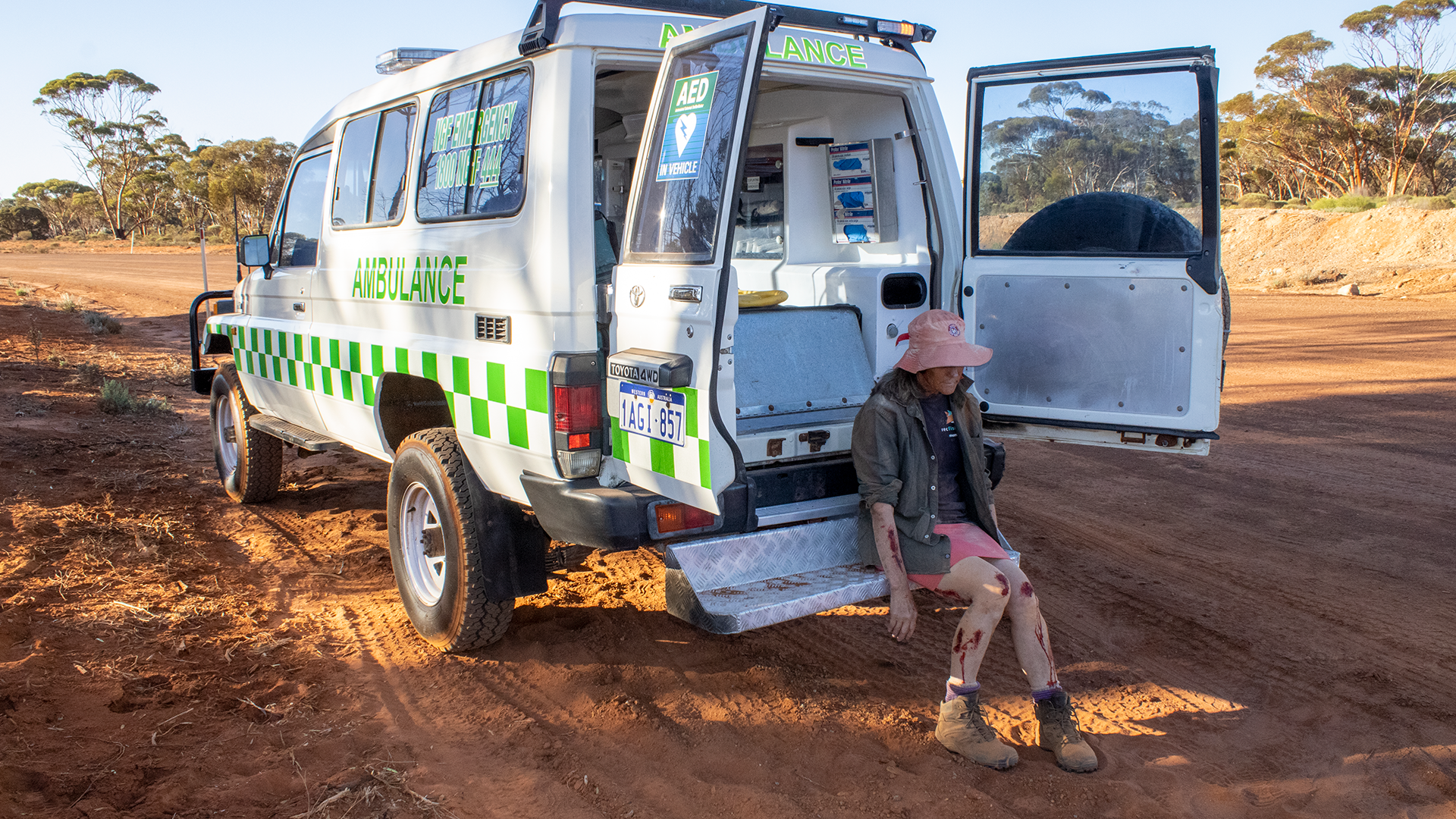
Image: MERC Kalgoorlie, May 2021, First Aid Scenario with volunteer role player, moulage and mine site emergency vehicle. Source: TraumaSim Group
TraumaSim Group has proudly been supporting emergency response training and mine rescue competitions within Australia for several years and believe that this style of training and systems testing could be adopted across a range of workplaces and industries.
“Having the confidence to deal with an emergency situation makes a huge impact” says Nola Pearce, Founder & Director of TraumaSim Group, who began her career as a nurse and said the move to first aid and then simulation training was sparked by a passion for realism.
Nola says it is vital to appoint and train competent people to be responsible in emergency situations. With a hands-on training environment through single or multiple casualty scenarios, workplaces and their employees will benefit greatly from practicing emergencies within a realistic simulation which lessens the shock and trauma of a real-life event, enabling the responder to perform competently when required.
“There is a big difference from classroom training to actually practising skill in the moment and I am passionate about preparing people for that moment in their life. We have seen soldiers in the military faint at the sight of blood. People will never know how they will react to something unless they practise”.
“We have vast experience in providing trauma and emergency simulation services and solutions for the Australian Army and now provide these services to mining and other high-risk workplaces around the world.”
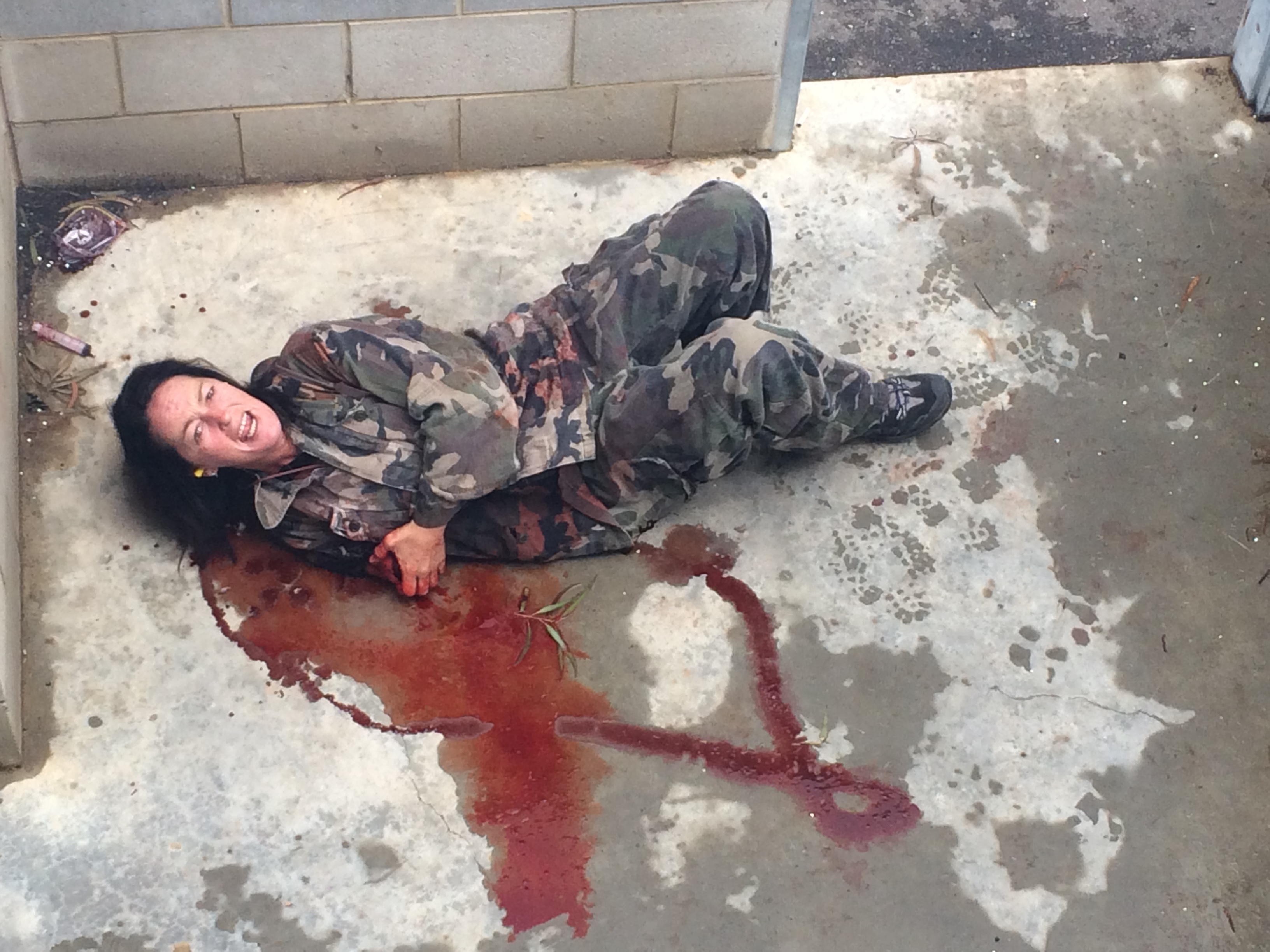
Image: an Amputee Role Player engaged in military mass casualty exercise for pre-deployment and preparedness training exercise. Source: TraumaSim Group
TraumaSim takes pride in being a global leader of trauma simulators and bleeding control innovation and uses its involvement in these events to understand what clients need and how we can help them to achieve a safer working environment for their employees.
For a glimpse into what is involved in planning the competition and what happens during the event, check out this video from the 2019 Surface competition:
This year’s Underground Mine Emergency Rescue Competition (UMERC) is scheduled for 5-7 November 2021 and will be hosted by Evolution Mining at their Hornet Mine Site in Kalgoorlie-Boulder, WA.
The Surface Mine Emergency Rescue Competition (SMERC) will be held 25-28 November at Langley Park, Perth
WA, and with the first all female team competing, we can’t wait to watch them in action!
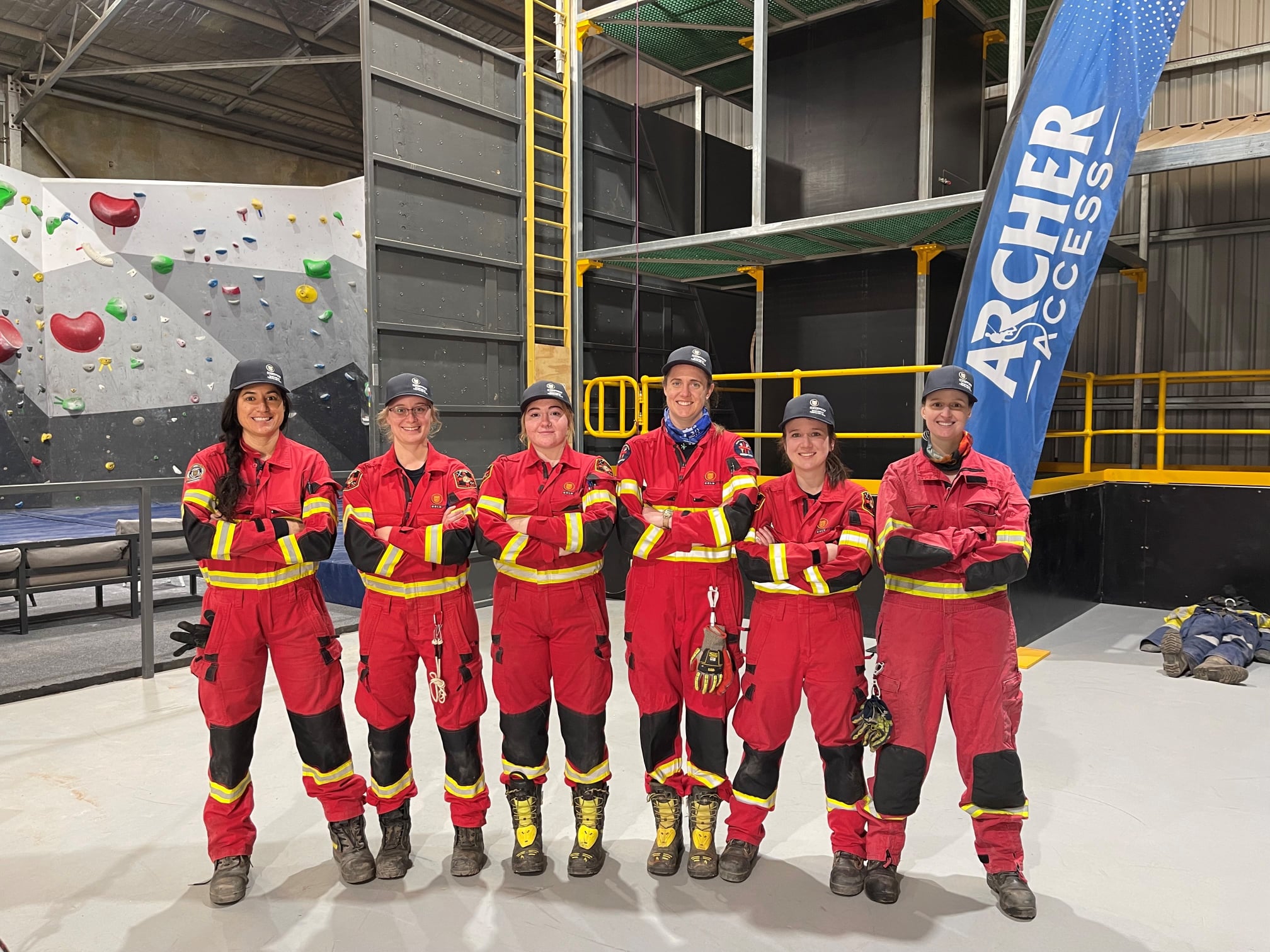
Image: first all girls team representing Goldfields Combined. Left to right: Stacey Thompson (Granny Smith), Victoria Putter (St Ives), Kiara Fischer (St Ives), Tayla Parnham (Agnew), Chloe Hicks (St Ives), Mattie King (Agnew), (absent) Rebecca Tupling (Gruyere). Source: Facebook, Mine Rescue Competition [group]
Story images with thanks to Remote Digital Imagery & TraumaSim Group.
Links/References:
https://www.cmewa.com.au/mine-emergency-response-competitions/
